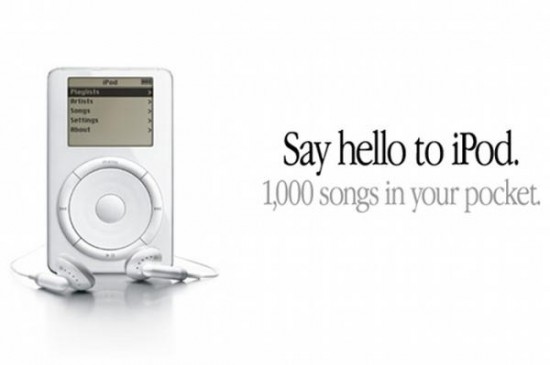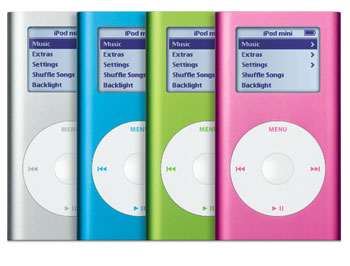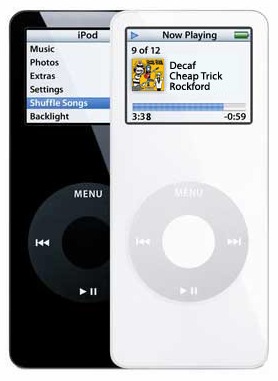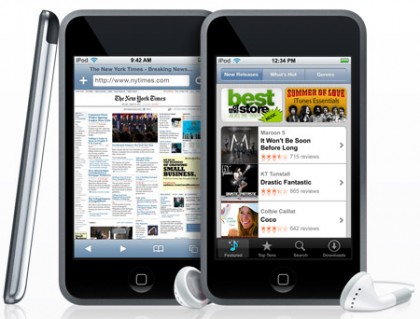Ten years ago yesterday, Apple CEO Steve Jobs presented a brand new product that would take the world by storm.
“1000 songs in your pocket” was the tag line used by Jobs when he unveiled the first ever Apple iPod, which back then had a 5GB hard drive. 10 years on and the Apple iPod is still relevant, and is in fact the leading MP3 player in that market, with a share of over 80%.
The first iPod was effectively the first ‘iPod Classic’, a line which would go on to be reinvented six times. Only by the sixth generation was the ‘Classic’ name introduced, but this device kept the same styling that Apple developed in the very first iPod.
The first iPod was available with a 5GB hard drive and a Firewire connection rather than USB. The scroll wheel was mechanical and moved around freely – this was set to become touch-sensitive in the second generation iPod. A larger 10GB model was released later, offering double the storage space, which back then was groundbreaking.
Apple upgraded the iPod on a yearly basis, with the capacity for music increasing each time. The second generation had 10 and 20GB options, and the third gen had 10, 15, 20, 30 and 40GB versions.
2004 was a huge year for Apple and the iPod. The company introduced a completely new iPod – the iPod Mini and the first colour screen iPod within the space of 6 months. The original iPod would now be able to store and display colour photographs, with the storage space bumped up to a new high of 60GB.
But it was the new iPod mini that captured the attention of many. With companies such as Creative launching the Zen mini MP3 player, Apple had to create something more portable and cheaper than their current iPod. The first iPod Mini had 4GB of storage, a black and white screen and the familiar touch wheel control that would continue through to the iPod Nano.
In 2005 Apple introduced two new iPods – the iPod Shuffle, and the iPod Nano, which would replace the iPod Mini. The Shuffle answered many people’s prayers – they wanted an iPod but they couldn’t afford the bigger models. The Shuffle addressed that, offering a more basic MP3 player for under £100. The Nano replaced the Mini, and was smaller and thinner still.
Both devices were updated year-on-year, all the while Apple was continually developing and innovating with the other half of the iPod story – iTunes. Apple’s iTunes software revolutionised the digital music market, making people aware of a different way to buy and consume music, digitally.
In 2007 Apple introduced arguably their most popular iPod to date, the iPod Touch. The company had recently released the iPhone, which soon became something many people wanted. Soon the public realised that the iPod Touch was the closest they could get to owning the coveted iPhone, but without the phone features. They could play games, go online and send email with it – something few MP3 players had done before.
Four years on from the original iPod Touch and a decade on from the original iPod and we still use iPods on a daily basis, with the devices becoming market leaders. We have smartphones that can play music and do so much more, yet everyone wants an iPod in some way. We have the iPod Touch for games and app fans, the smaller iPod Nano which is ideal for fitness use and the iPod Classic which is still going, offering more storage space for music, photos and videos than any other iPod.
Each device has its uses, and each has a huge number of fans. Though I’m sure many other companies could have developed an effective MP3 player, I’m not sure any would have aided the digital music market quite as much as Apple would to go with a successful device.
So we say Happy Birthday to the iPod, and a big thank you to Apple for developing such a simple, attractive little gadget that allows us to take our music anywhere.
Let us know your thoughts on our comments below or via our @Gadget_Helpline Twitter page or Official Facebook group.




